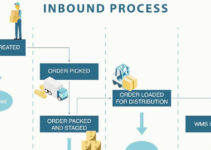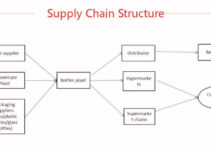Businesses and organizations rely on suppliers for the smooth running of their operations. Speaking of suppliers, they are a completely separate business, and working with them comes with a lot of risks. Today, we’ll discuss what is supplier risk analysis; its various types, importance, and challenges.
What is Supplier Risk Analysis?
Supplier risk analysis comprises various strategies and practices that companies employ to identify and resolve the problems relevant to working with the supplier. Some of the key issues and threats relevant to working with suppliers are as follows;
- Unstable finances
- Delivery issues and problems
- Quality problems
When you recognize the potential threats after conducting the risk analysis, it allows them to reduce the risk factors and potential problems.
Scoring System
Supplier risk analysis has got various practices and strategies, and the scoring system is among one them. It means that you assign a particular numerical value or score to every supplier based on the risk attached to them. A higher score or value means that the risk is also higher.
Listing Criteria
As the name implies, it comprises following the particular criteria to analyze every supplier. The criteria list consists of the following indicates that you observe for every supplier;
- Delivery time
- Quality control
- Performance record
- Financial stability
Here you give a rating and score to every criterion while analyzing the supplier, the final addition of all the scores gives you risk value.
Businesses and companies employ the integration of strategies and practices. Supplier risk analysis plays a significant role in running a successful business; it doesn’t matter what strategy you employ. However, it allows you to minimize the problems in the long term for the smooth running of the business operations.
Importance of Supplier Risk Analysis
No Disruption
Nowadays, businesses and organizations are aware of the significance of supply chain risk analysis. The disruption in the supply chain could badly impact the smooth running of various operations of the company. Resultantly, it would disrupt the production and manufacturing processes, delay the delivery of products and services; loss of revenue and profitability.
No Vendor Risk
The vendor risk could jeopardize the reputation, operations, and finances of the company. That’s why comprehensive SRA analysis plays crucial for the operation of the company. It impacts the company’s capability to decrease the risk factor before hiring the supplier.
Continuous Process
SCRM is a continuous process, and it protects your business and lowers the risk factor from working with various suppliers and vendors. While analyzing various suppliers, you should recognize the potential threats that may come from working with a particular supplier
Types of Supplier Risk Analysis
Some of the main types of supplier risk analysis are as follows;
Business continuity Risk
Business continuity risk means that the particular supplier won’t meet the terms and conditions of the contract due to any type of unfortunate incident. Companies could reduce this type of risk by having a contingency plan like by having an alternative production location or supplier. Some of the factors that cause business continuity risks are;
- Bankruptcy
- Financial issues
- Power outage
- Fire
- Accidents
- Natural disasters
Operational Risk
Operation risk is the probability of loss due to any mistake or error that happens in the planning or implementation of business processes. Various inadequate and improper processes, systems, and training programs could cause this type of risk. Staffing problems would stop vendors and suppliers from reaching their goals and objectives. You can reduce operational risks by comprehending the procedures and capabilities of the suppliers.
Strategic Risk
Strategic risk is the probability that the supplier won’t reach the company’s needs and requirements because of the difference in their strategic objectives. For instance, they would make business decisions opposite to growth like the allocation of resources to a new product line that is completely irrelevant to the company.
Reputation Risk
The actions and products of suppliers would jeopardize the reputation of the company. That’s why it is significant for the success and reputation of the company. For instance, if the supplier is facing a lawsuit for a data breach, then it would directly or indirectly impact the reputation of the company. Some of the other activities that would jeopardize the reputation are;
- Illegal
- Unethical
- Scandal
Credit & Financial Risk
As the name implies that the supplier won’t meet the terms and conditions of the financial obligation, and banks declare the default. For instance, a supplier is facing financial issues, and they don’t receive funding from lenders and banks. You can analyze the credit and funding risk in various ways;
- Studying the financial statement of the company
- Confirming with the lender about the creditworthiness of the supplier
Information Security Risk
Information security risks could potentially jeopardize and compromise the data security, integrity, and confidentiality of the system. Various factors would cause the information security risk;
- System vulnerabilities
- Human error
- System malfunctioning
- Malicious cyberattacks
- Poorly protected data system
- Already hacked system
Some of the steps you should take to protect your business from such supply chain issues like;
- Strong information security control system
- Security evaluation
- Access control measures
- Data encryption
Regulatory & Compliance Risk
Compliance and regulatory risk come up when a supplier doesn’t agree with the industry standards, regulations, and laws of the company. This type of risk results in the form of the following;
- Negative consequences
- Bad Reputation
- Financial penalties
- Fines and suspension of operations
- Legal actions against the company
- Criminal charges
- Revocation of the license
Challenges to Supplier Risk Analysis
Some of the main challenges to supplier risk analysis are as follows;
Inherent Risk
It is a type of inherent risk that businesses and companies can’t avoid, especially when they’re collaborating with external suppliers. That’s why companies can’t avoid this risk when their operations are relying on the supply chain.
Data Limitation
Businesses and organizations need access to the data and information in order to analyze the supplier like they need following;
- Quality control measures
- Performance indicators
- Financial information
But suppliers aren’t open to sharing their business information with their clients because they’re fearful of losing the competitive edge.
Complications
While producing a single product, supply chain processes need to deal with hundreds of stakeholders. There are various suppliers in different countries and they are employing different methods of supply chain processes.
Limited Resources
Usually, small businesses and companies don’t have a lot of resources to analyze supplier risk effectively. They don’t have analytical tools and software and the cost of assessment tools is very high. However, they also avoid it because it is time-consuming and require a lot of data and resources.
Variable Issues
The supply chain processes and suppliers of every organization are different, and they all are facing different types of challenges and issues. There is no one particular solution for all of them. If a solution has worked for one organization, then it doesn’t mean that it would work for others as well.
Big Supplier Base
Usually, large-scale organizations are dealing with hundreds and thousands at once. Sometimes, those suppliers are operating in different countries and employ various methods and strategies. Therefore, conducting an accurate analysis is highly different for them.
Conclusion: Supplier Risk Analysis
After an in-depth study of supplier risk analysis; its importance, types, and challenges; we have realized that suppliers’ risk assessment is highly significant for businesses and organizations. If you are conducting supplier risk assessment, then you should keep in mind the abovementioned tips and guidelines.
Ahsan is an accomplished researcher and has a deep insight in worldly life affairs. He goes Live 3 days a week on various social media platforms. Other than research writing, he’s a very interesting person.


